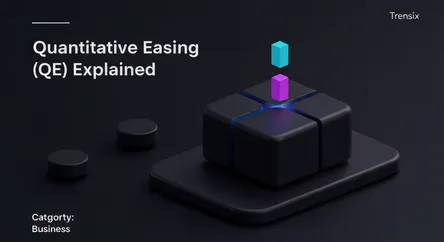Business
Quantitative Easing (QE) Explained

Discover Quantitative Easing (QE), a powerful monetary tool used by central banks to stimulate economic growth by increasing the money supply.
What is it?
Quantitative Easing (QE) is an unconventional monetary policy tool used by central banks to stimulate a struggling economy. When traditional methods, like lowering interest rates, are no longer effective, a central bank can implement QE. It involves purchasing large-scale government bonds and other financial assets from the open market. This action increases the money supply and injects liquidity into the banking system, which in turn lowers long-term interest rates. The primary goals are to encourage banks to lend more, boost business and consumer spending, and promote economic growth.
Why is it trending?
QE frequently trends during periods of significant economic uncertainty or crisis. It gained prominence globally after the 2008 financial crisis and was used again extensively in response to the COVID-19 pandemic. Discussions about QE resurface whenever central banks, like the U.S. Federal Reserve or the European Central Bank, meet to decide on monetary policy. News about starting, ending, or reversing QE (known as Quantitative Tightening or QT) creates buzz because these decisions have massive implications for global financial markets and economic forecasts.
How does it affect people?
For individuals, QE can have mixed effects. By lowering long-term interest rates, it can make mortgages, car loans, and business loans cheaper, potentially stimulating the housing market and job creation. It often boosts stock and other asset prices, benefiting investors. However, a major risk is inflation; injecting large amounts of money into the economy can devalue the currency and increase the cost of living, impacting household budgets. It can also contribute to asset bubbles, making investments riskier and potentially widening wealth inequality.